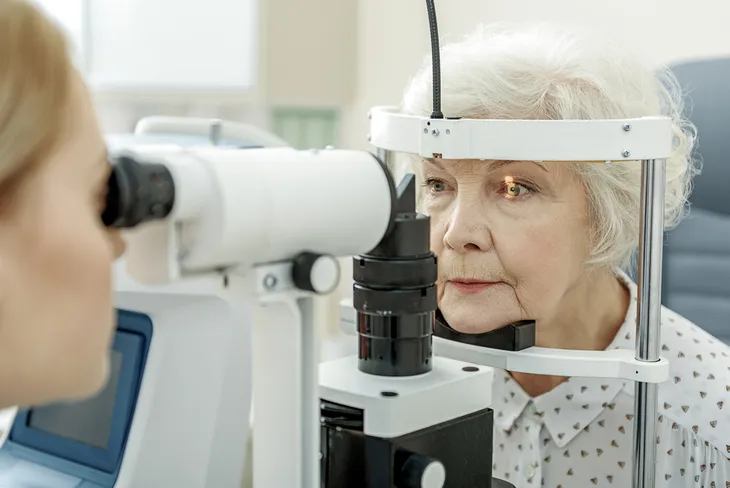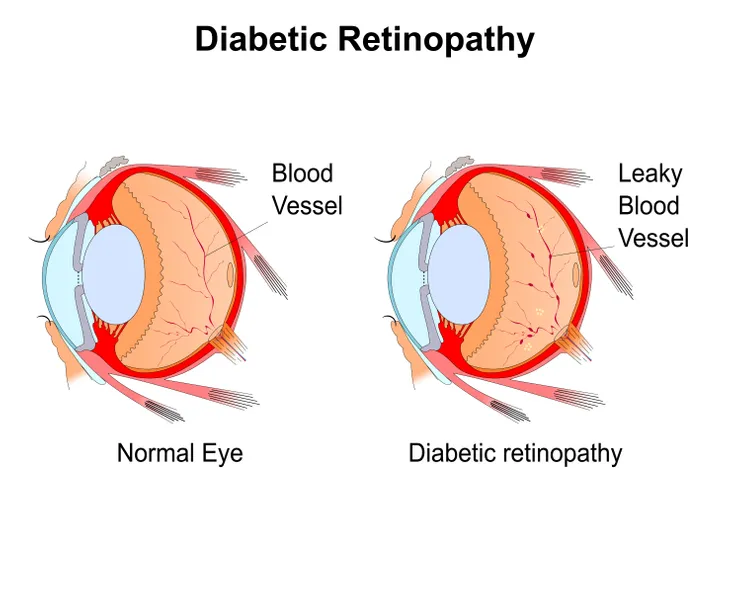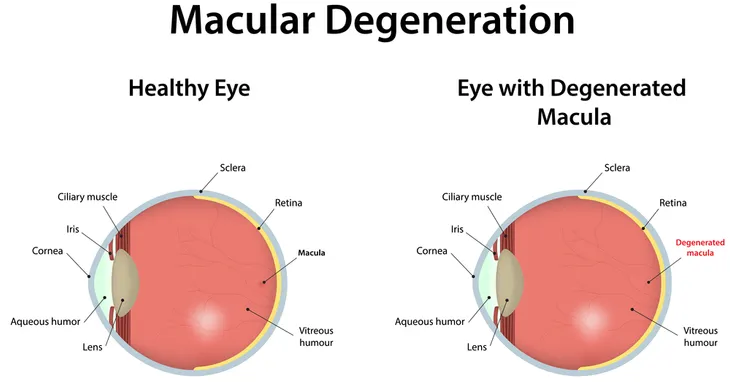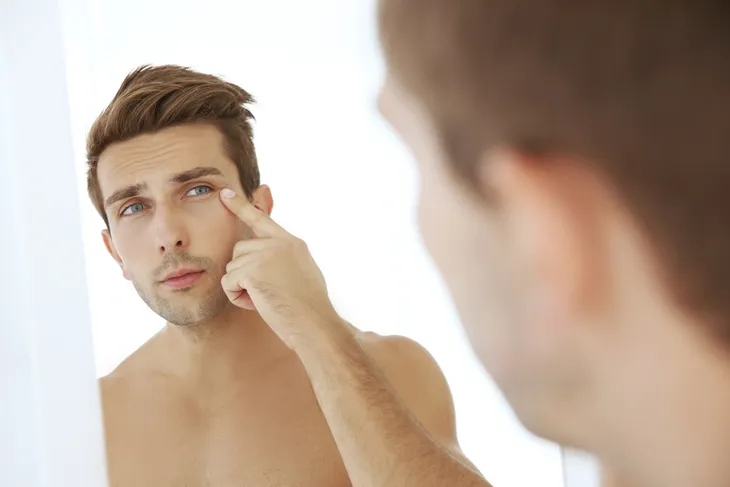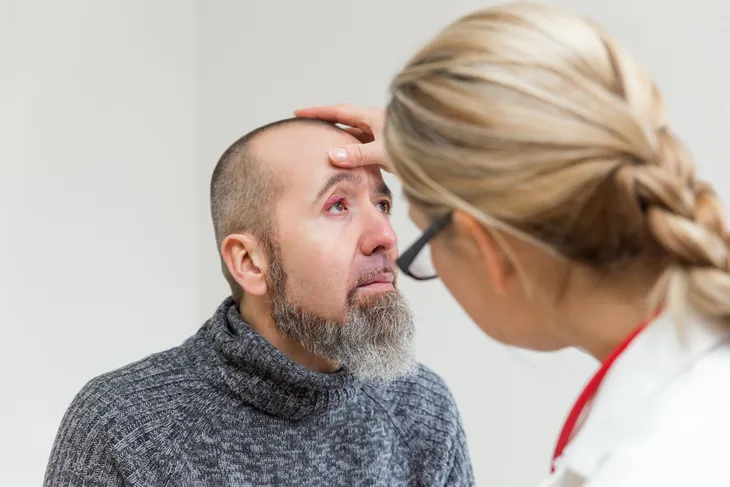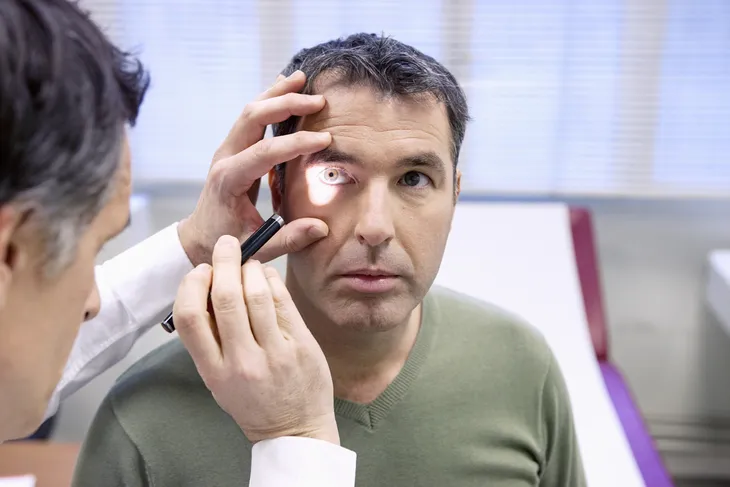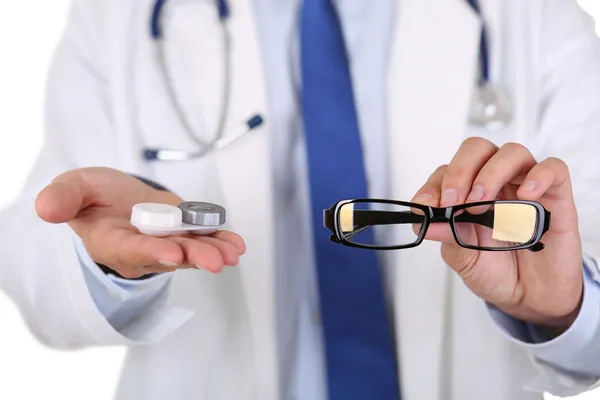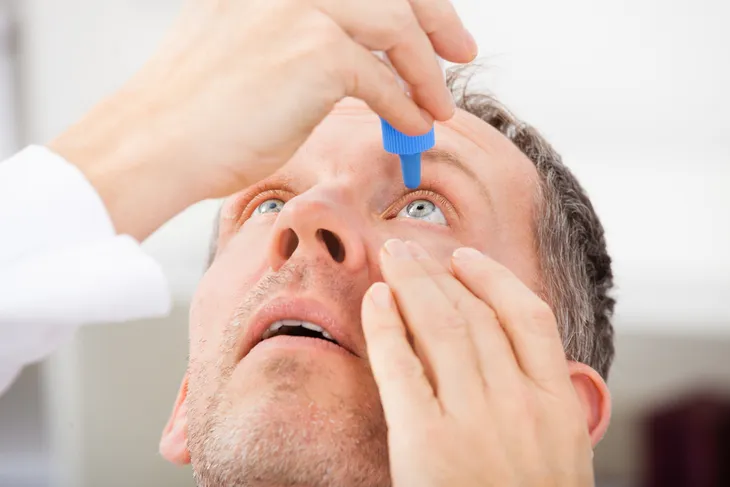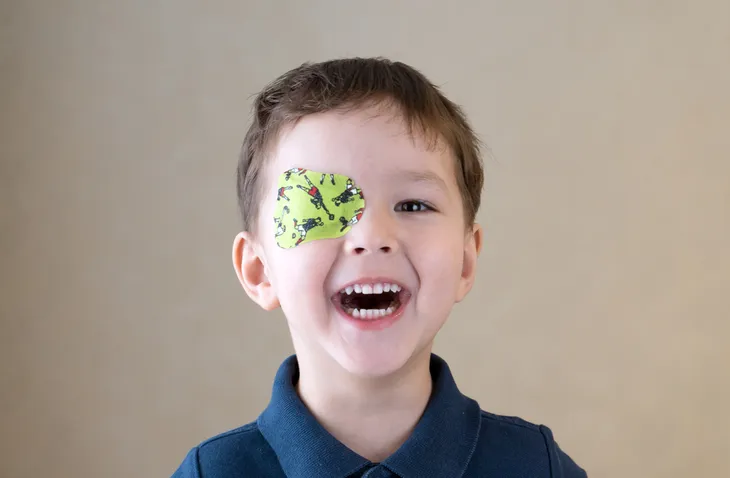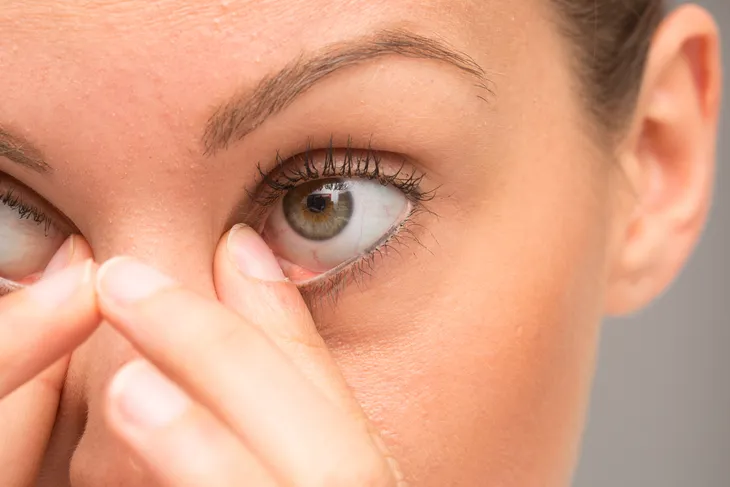Many of us take our eyesight for granted, that is until we start noticing changes and seek the advice of an optometrist. While eye problems can be associated with aging, they can happen to anyone of any age.
It’s important to recognize the early signs of eye troubles because your doctor will be more ready to deal with them through any available treatments. Here are 14 things to look out for so you don’t lose sight of your eye health…
Cataracts
The Mayo Clinic notes cataracts are the result of clouding of the eye’s lens, which is like “looking through a frosty or fogged-up window.” Having a cataract will affect your ability to see near and far – from reading a book to driving a car, it adds.
Cataracts tend to develop slowly, so you may not notice any signs until they’ve had a chance to progress. You may notice you need brighter light or stronger prescription glasses at first – but if a cataract impairs your vision, surgery will be necessary. Luckily, cataract surgery is routine and generally safe, it adds.
Retinal Issues
There are a number of conditions that can affect the retina, which is a very important layer of tissue at the back of the eye that converts light received through the eye’s lens into signals the brain can recognize. Without a working retina, you won’t be able to see.
Two of the most common retinal conditions are retinal detachment, which is when the retina changes position due to family history, cataract surgery, eye injury, or other diseases, explains the National Eye Institute. Diabetic retinopathy is – like it sounds – exclusive to diabetics and causes damage to the blood vessels of the retina.
Macular Degeneration
This is a term you’ve probably heard people use – that’s because it’s the leading cause of severe and irreversible vision loss in people aged 60-or older, according to WebMD. It is related to the deterioration of the macula, which is the small central portion of the retina, it adds.
The condition progresses as the patient ages, so it’s often referred to as age-related macular degeneration (AMD), notes the source. It doesn’t usually blind a person completely, but it “can be a source of significant visual disability,” it adds.
Uveitis
This condition is characterized by inflammation of the middle layer of the eye, usually the result of an injury or inflammatory disease, explains AllAboutVision.com. It can also be the result of exposure to certain toxic chemicals, it adds. Red eyes, sensitivity to light and eye pain are 3-common symptoms.
The condition is often chronic and can lead to other eye complications such as cataracts, elevated eye pressure, glaucoma, and retinal detachment, it adds. The condition is actually more common in the young adult to middle age categories – 20 to 50 – it explains.
Glaucoma
This is another eye condition you’ve probably heard about many times, as it’s quite common. “Glaucoma is the leading cause of irreversible blindness in the world,” says MedicineNet.com. However, that doesn’t make it any less serious – it can cause vision loss and even complete blindness, it adds.
The condition is often associated with elevated eye pressure that in turn damages the optic nerve, adds the source. The best way to detect glaucoma is by having regular eye exams that include testing intraocular pressure, as symptoms don’t usually appear early on, warns the site.
“Floaters”
We’ve all had these at some point – some worse than others. They are translucent dots, strings, or other shapes (some a bit darker) that track across your vision. But what are they really, and what do they say about your overall eye health?
The Mayo Clinic explains most eye floaters are caused by age-related changes to the vitreous – a “jelly-like substance” in the eye that becomes more liquid as the years pass. “Microscopic fibers within the vitreous tend to clump and can cast tiny shadows on your retina,” it adds. While they’re not usually too concerning, if you suddenly notice a sharp increase in floaters, you should see an eye professional immediately, it adds (especially if you see flashes of light or have trouble seeing out of the corners of your eyes). These sudden symptoms could actually point to a tear in the retina.
Keratoconus
The Huffington Post describes this eye problem as the weakening of collagen fibers in the cornea, which is the transparent portion at the front of the eye. “The result is the cornea bulges out and can cause tremendous loss of vision if it is not treated early and quickly,” it warns.
The source compares this to steel beams weakening in a building, leading to a collapse. It says there are minimally invasive treatments available, but left too long a cornea transplant will become necessary to save your vision.
Nyctalopia
You may not have heard of this medical term, but you most surely have heard of night blindness, which is what this is. You may have strong eyesight during daylight hours, but find yourself struggling in dim light whether driving or reading.
Contrary to what the name suggests, it’s vision impairment in darkness, not actual blindness. It can be caused by a number of other health conditions – including being nearsighted, having cataracts, having a condition called retinitis pigmentosa (when dark pigment collects in your retina and creates tunnel vision), or suffering from Usher syndrome, a genetic condition that affects both vision and hearing, explains Healthline.com.
Conjunctivitis
This is another common condition that you may know better from its non-medical name, which is pinkeye. While this condition is highly contagious and can look quite alarming due to redness, it’s not usually too serious – but should still be treated by a doctor.
Pinkeye is quite common among young children in a daycare or classroom environment. While in some cases the prescription is to keep your child at home and away from others, in other cases a doctor will prescribe antibiotic eye drops, explains KidsHealth.org. Left untreated, it can spread beyond the conjunctiva (a mucus membrane on the front of the eye) and lead to swelling or a fever, it adds.
Refractive Errors
You might not know what this means, even with those glasses sitting on your nose. Put simply, refractive errors are when light is not correctly focused due to the size and shape of your corneas or aging of the lens. In fact, the most common age-related cause of refractive errors is called presbyopia, which is a hardening of the lenses that usually occurs after age 40, notes the Huffington Post.
The result? You’re nearsighted (can’t focus on objects far away) or farsighted (can’t see up close) and need corrective lenses – also known as glasses. You might not think of this as an “eye condition” per se, as glasses and contact lenses are so common – but refractive errors “are the most common cause of vision problems,” notes the source.
Dry Eye
This is usually referred to as a syndrome or disease of the eye, and it occurs when your eyes don’t produce enough tears to keep them hydrated, explains the NHS in the UK. This will lead to redness, swelling and irritation, it adds.
There are a number of reasons you may have dry eye syndrome, explains the source – it could be from living in a hot or windy climate, wearing contact lenses, having side effects from a medication, or can even be the result of an underlying health condition such as blepharitis (eyelid inflammation). It can also point to hormonal changes in women from menopause, pregnancy, or using oral contraceptives, it adds.
Amblyopia
This is another one of those conditions that you probably know by its less scientific name – which is lazy eye. AllAboutVision.com explains this is actually a development disorder that prevents an eye from reaching normal acuity, even with the assistance of glasses or contacts.
This condition begins in infancy and early childhood, and can actually affect both eyes in some cases, notes the source. If treated early, vision damage can be avoided, but if ignored it can cause “severe visual disability” in the affected eye(s), says the source. A common treatment is putting a patch over the better eye to encourage better vision development of the lagging eye, it adds. The condition can also be caused by misalignment of the eyes, (called strabismic amblyopia), which requires surgery to correct followed by patching.
Strabismus
Speaking of eyes that are not pointed straight, this is the case with strabismus, a condition that causes the eyes to be pointed in different directions (sometimes referred to as “crossed eyes”). It usually means 1-eye is straight while the other is pointed inward or outward, and the affected eye can switch periodically, explains the American Academy of Ophthalmology.
This is a common problem in children, affecting about 4-percent of all kids in the U.S., notes the source. It can also occur later in life, and is sometimes traceable through family bloodlines, it adds.
Nystagmus
The American Optometric Association says this is characterized by “repetitive, uncontrolled movements” of the eyes that can impair vision and depth perception. It can also affect a patient’s balance and coordination, it adds.
The eye movements may be up and down, side to side, or in a “circular pattern,” it notes. Due to this, both eyes are not able to look at an object together for extended periods of time. It can show up in infancy, childhood, or even adulthood, and is most commonly caused by a neurological condition present at birth, it adds. If it shows up later in life (also referred to as acquired nystagmus), it can point to another disease such as multiple sclerosis.

